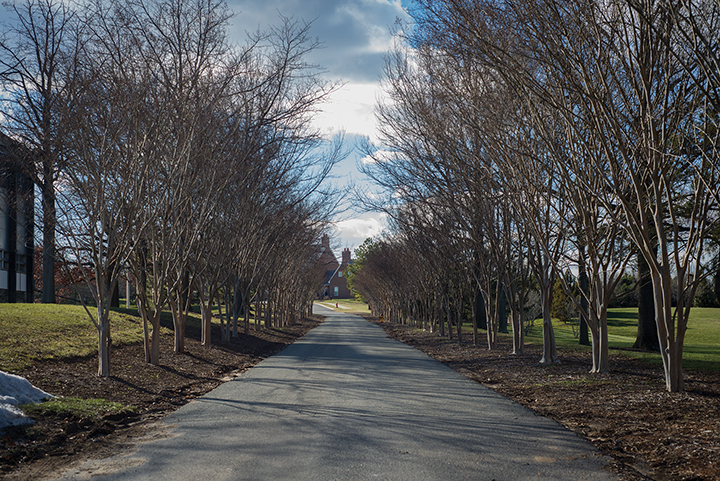More than 26 percent of the University of Maryland’s campus is covered with trees. About 10,000 plantings have earned the university recognition by Tree Campus USA for seven consecutive years.
Tree Campus USA, a program of the Arbor Day Foundation, recognizes colleges and universities that promote healthy tree management and student involvement in the caretaking. This university, which is in the process of submitting an application for recognition for 2015, has been involved with the initiative since it started in 2008, said Karen Petroff, assistant director of arboretum and horticultural services.
“It’s not a Nobel Prize, but it’s something that validates what we do day in and day out and something the campus should be proud of,” Petroff said. “Not everyone thinks about quantifying how much they enjoy trees, but on a hot summer or spring day, when you notice birds in the trees and the blooming leaves, you notice the canopy more.”
Officials expect to hear the results of this year’s certification application later this month, Petroff said.
To be part of Tree Campus USA, a university must have an advisory committee, a campus tree care plan, a campus tree program with annual expenditures, an Arbor Day observance and a service learning project, according to the program website.
This university’s advisory committee, the Arboretum and Botanical Garden Steering Committee, has met monthly since 2008, Petroff said. There are about 10 members, including Facilities Management staff and sometimes a student.
The tree campus plan consists of about $125,000 in funding and covers management areas including planting guidance, overall tree canopy goals and consequences for damage, according to Petroff.
Maryland’s official Arbor Day, the first Wednesday in April, is celebrated with a public tree planting ceremony, Petroff said. During the event, students can assist, and one year the university president attended the ceremony, said Harry Teabout III, the executive director of building and landscape maintenance. This year’s ceremony will be held April 6 on McKeldin Mall.
Service learning projects are usually scheduled around homecoming, Petroff said.
“We have multiple service learning programs throughout the year involving students and tree planting,” Petroff said. “One event last fall had members of the environmental science and policy program planting native species in the riparian buffer for Campus Creek using saplings donated by the U.S. Department of Agriculture.”
The university is even home to 19 county champion trees, each of which is the largest of its species in the county, Petroff said. Many of the champion trees are located near the Benjamin Building, Memorial Chapel and H.J. Patterson Hall, according to the Facilities Management website.
“All buildings, once they get built, keep on having maintenance, and trees are the same. They have to be maintained and fertilized to maintain their health on an ongoing basis,” said Bill Monan, associate director of landscape services. “I worked at a past university and it was discovered that every tree on their quad was diseased due to no maintenance. They were hand planted by the first president of the university over a hundred years before and were all lost.”
Most of the trees on campus are inventoried and available in the arboretum layer of the campus Web map, Petroff said.
At this university, though, the entire campus is an arboretum, Teabout said.
“Because of our involvement in the landscape, we have upped our game by the folks we hire,” Teabout said. “We have hired horticulturists who allowed us to have more expertise in different areas.”



